The vanishing treasures of the Russian North: The village of Paltoga
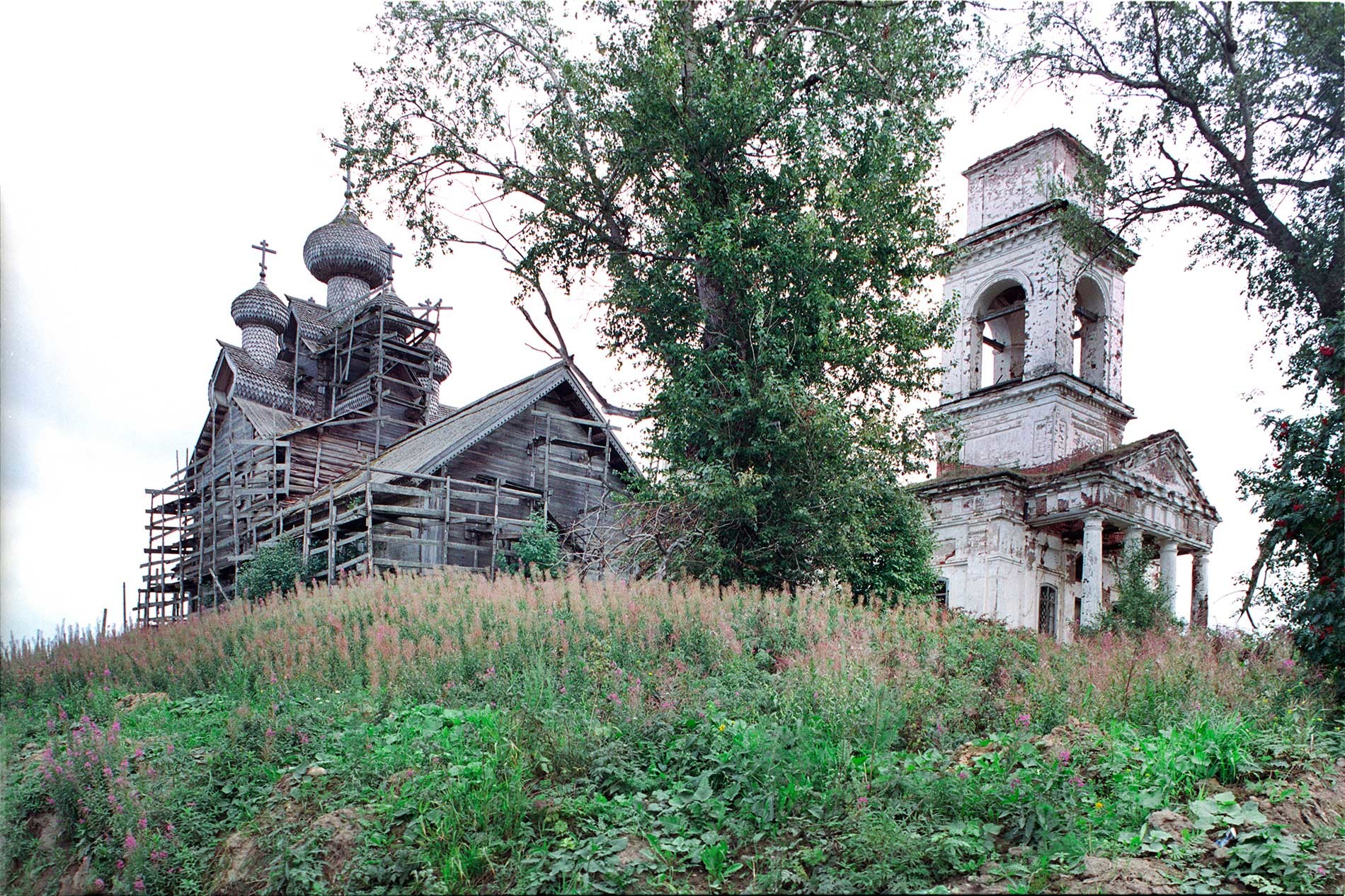
Paltoga. Church of the Epiphany (left)&Church of Icon of the Sign. Northwest view. Aug. 28, 2006.
William BrumfieldAt the beginning of the 20th century the Russian chemist and photographer Sergei Prokudin-Gorsky developed a complex process for vivid color photography. His vision of photography as a form of education and enlightenment was demonstrated with special clarity through his images of architectural monuments in the historic sites throughout the Russian heartland.
In 1909, Prokudin-Gorsky received a commission from the Ministry of Transportation to photograph along the Mariinsky Waterway in northwestern Russia. The state support that ensued from this decision gave an essential stimulus to the development of his documentary project. He traveled to the area in June and July of that year.
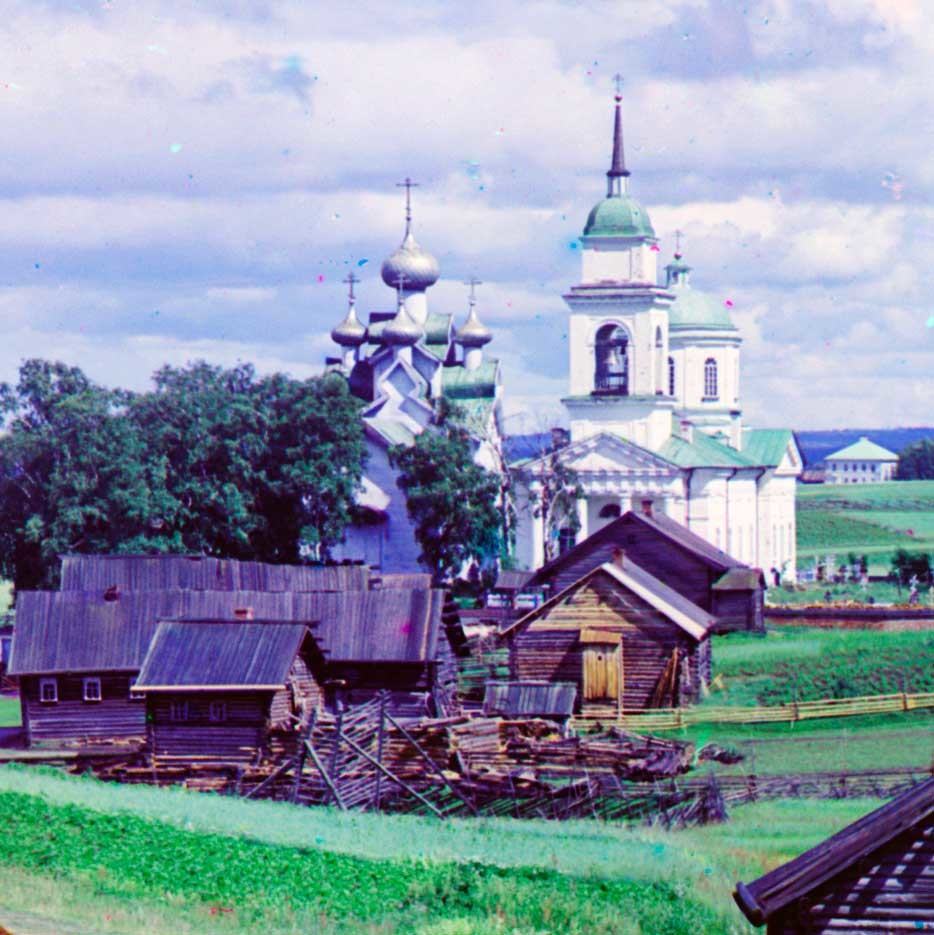
Paltoga. Church of the Epiphany (left)&Church of Icon of the Sign. West view. Summer 1909.
Sergei Prokudin-GorskyThe water route
This waterway was further developed during the reign of Emperor Paul (1796-1801), who named it after his consort, Empress Maria Feodorovna. The system extended from the Neva River at St. Petersburg to Lake Ladoga, then via the Svir River to the southern part of Lake Onega. Beyond Onega, the Vytegra River and
Vytegra: Crossroads of trade
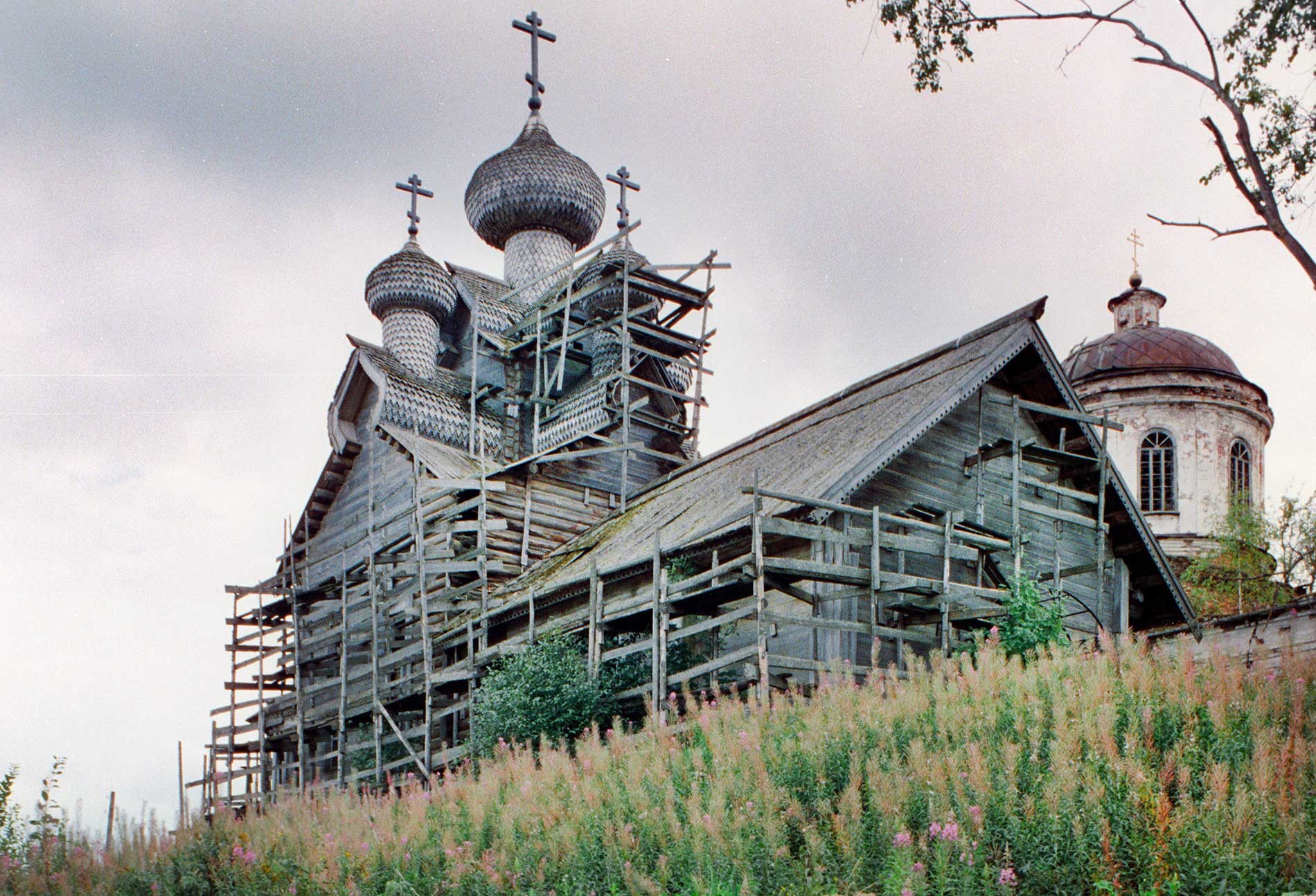
Paltoga. Church of the Epiphany, northwest view. Aug. 28, 2006.
William Brumfield
Church of the Epiphany, southeast view. Aug. 28, 2006.
William BrumfieldAn essential component of the Mariinsky Waterway was a canal that linked the Vytegra River, which empties into Lake Onega, and the Kovzha River, which flows south into White Lake. In 1799 this segment was named the Mariinsky Canal, and the settlement of Vytegra - named after the river and officially designated a town in 1773 - became the canal’s administrative center.
While at Vytegra, Prokudin-Gorsky photographed not only the town itself (much of which was rebuilt during the Soviet period) but also the village of Paltoga, located eight km to the west of Vytegra. The village was referred to as a
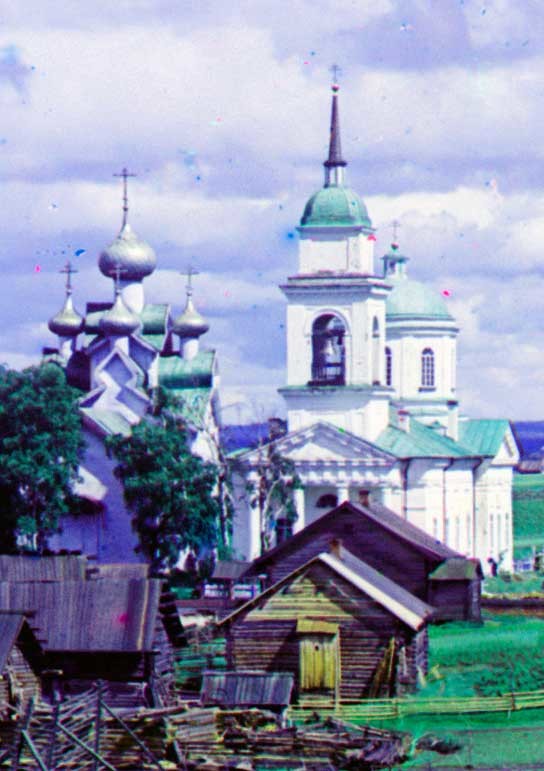
Church of the Epiphany (left)&Church of Icon of the Sign, west view. Summer 1909.
Sergei Prokudin-GorskyThe unique architecture of the North
At the time of Prokudin-Gorsky’s visit, Paltoga had two churches: The wooden Church of the Epiphany, built on a rise in 1733; and the Church of the Icon of Virgin of the Sign (Znamenie), built of whitewashed brick in 1810. Both churches still stood in picturesque ruin at the time of my visit in 2006.
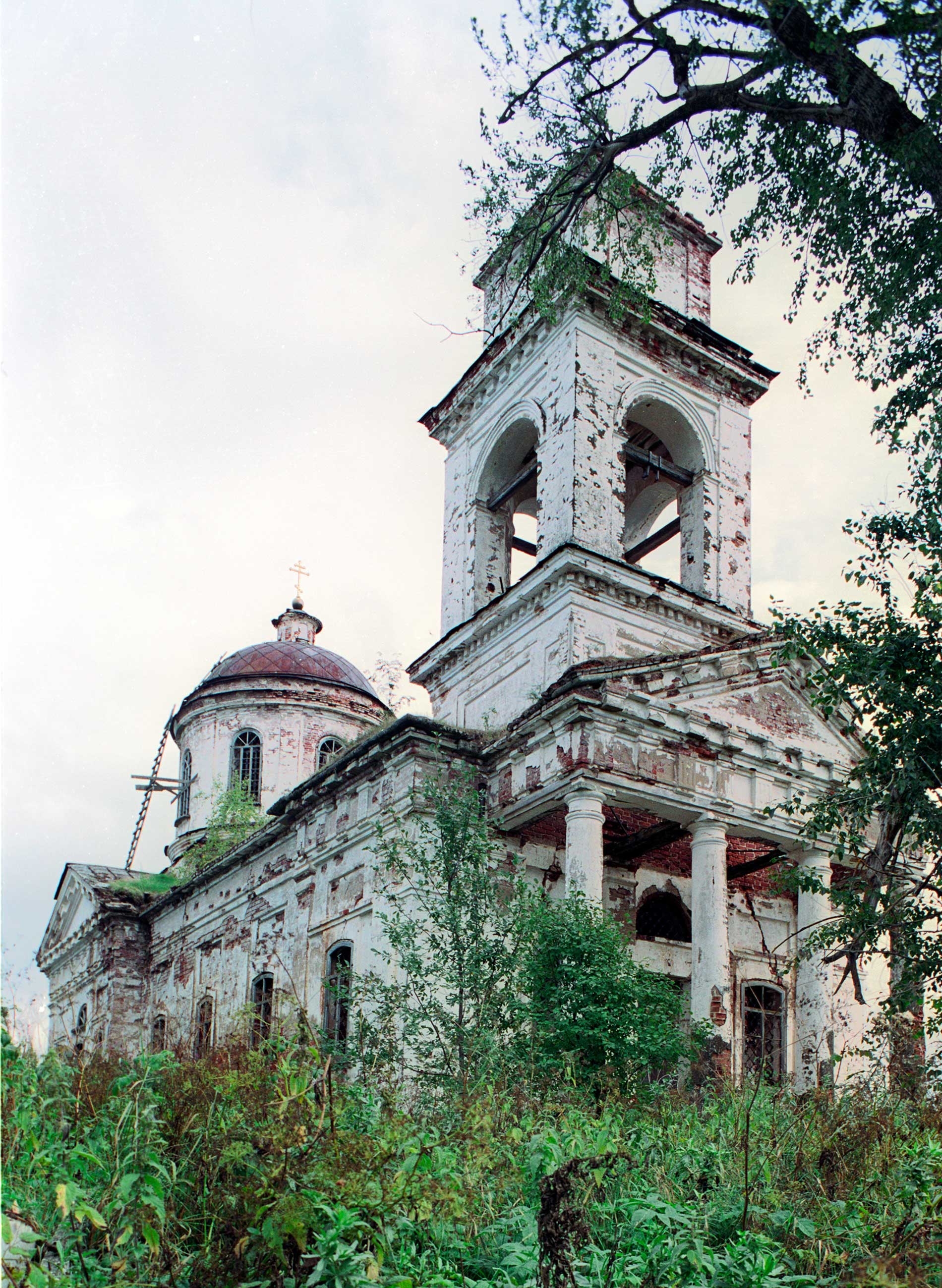
Church of Icon of the Sign, northwest view. Aug. 28, 2006.
William BrumfieldThe wooden Church of the Epiphany is especially interesting as an example of northern wooden architecture. Its basic structure is a cube crowned with a much smaller cube that serves as a core for the church’s five cupolas. The largest cupola rises at the center of the crown, while the other four cupolas rest on “barrel” gables that extend on the four points of the compass. The crown is just visible above the trees in Prokudin-Gorsky’s distant view from the west. Although not common, this distinctive arrangement is seen in a few other northern churches built at the turn of the 18th century. On the west
Unfortunately, no matter how well built, log structures will eventually collapse if not repaired and maintained. An instructive example is the Epiphany Church. In the 19th
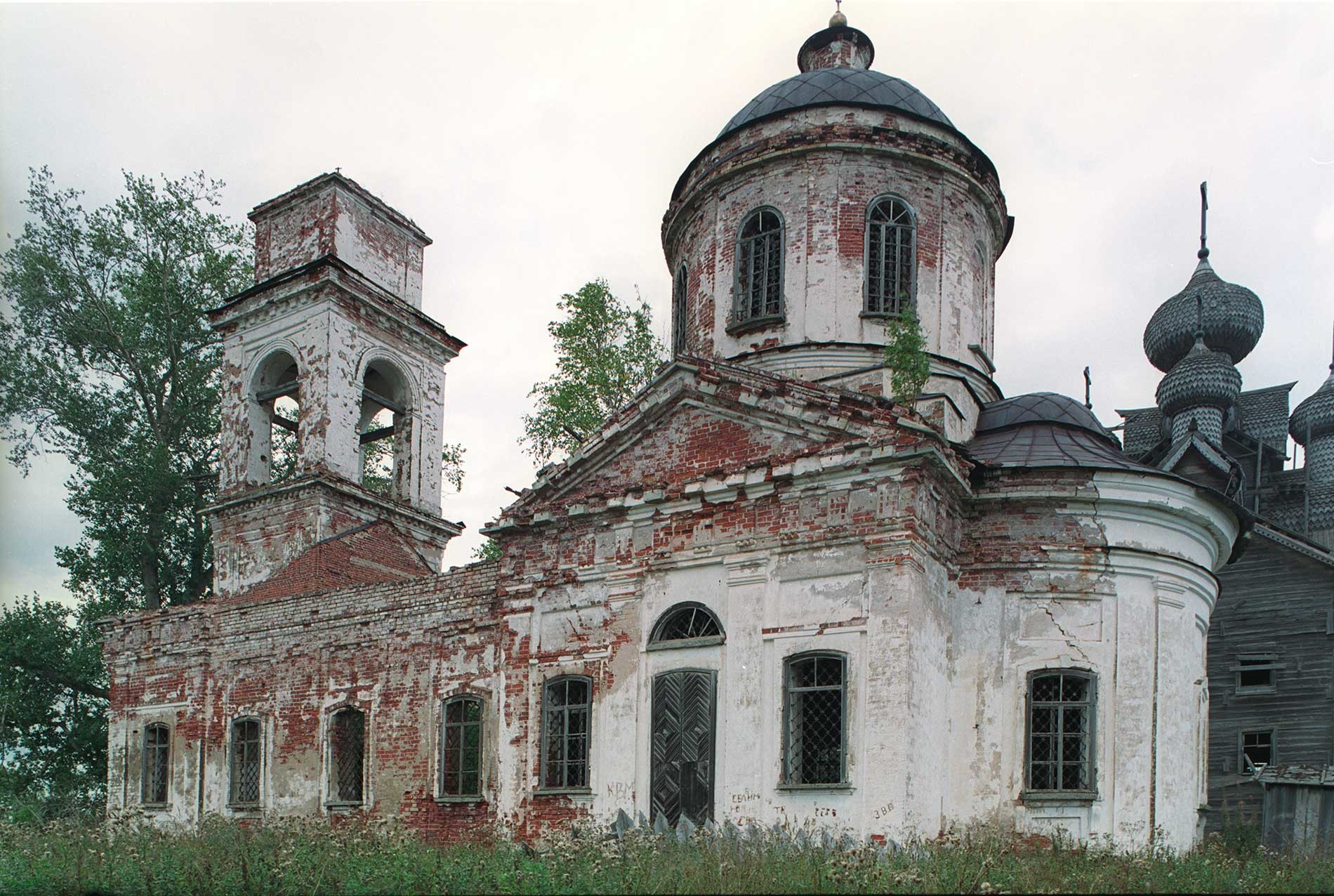
Church of Icon of the Sign, south view. Aug. 28, 2006.
William BrumfieldDuring the early Soviet period, the church was closed and deprived of four of its five cupolas. An effort to restore the structure began in the 1990s, and the cupolas were rebuilt with the recreation of shingle covering. But, as often happens, the restoration was abandoned in mid-course.
Ruin and collapse
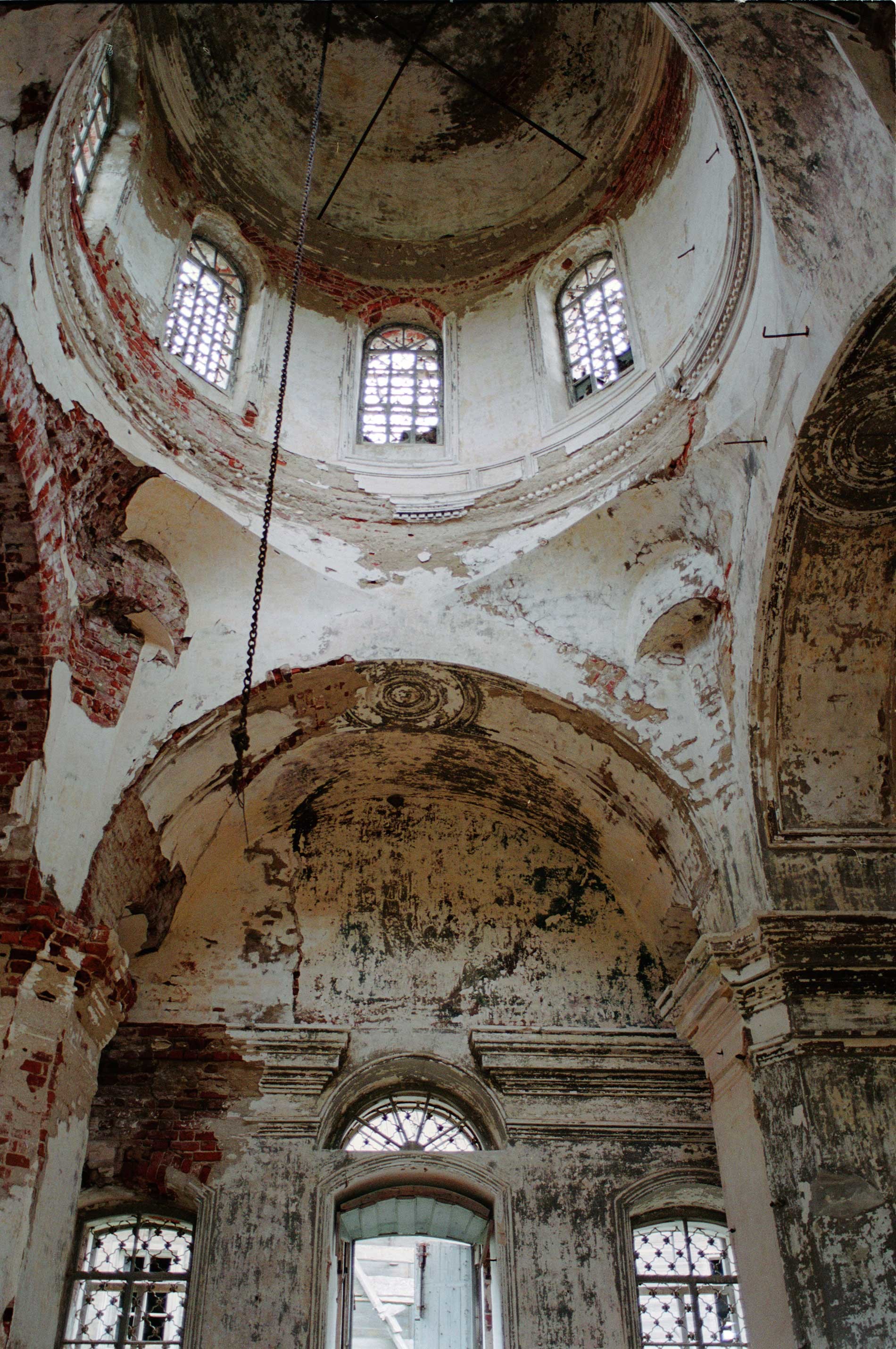
Church of Icon of the Sign. Interior, view north with dome. Aug. 28, 2006.
William BrumfieldAdjacent to the Epiphany Church is the Znamensky Church (Icon of the Virgin of the Sign), built in a simplified but appealing neoclassical style. The main structure supports a rotunda and dome, with a semicircular apse (containing the altar) on the east end. A one-story vestibule extending to the west is faced with an elegant Doric portico, above which is a tiered bell tower.
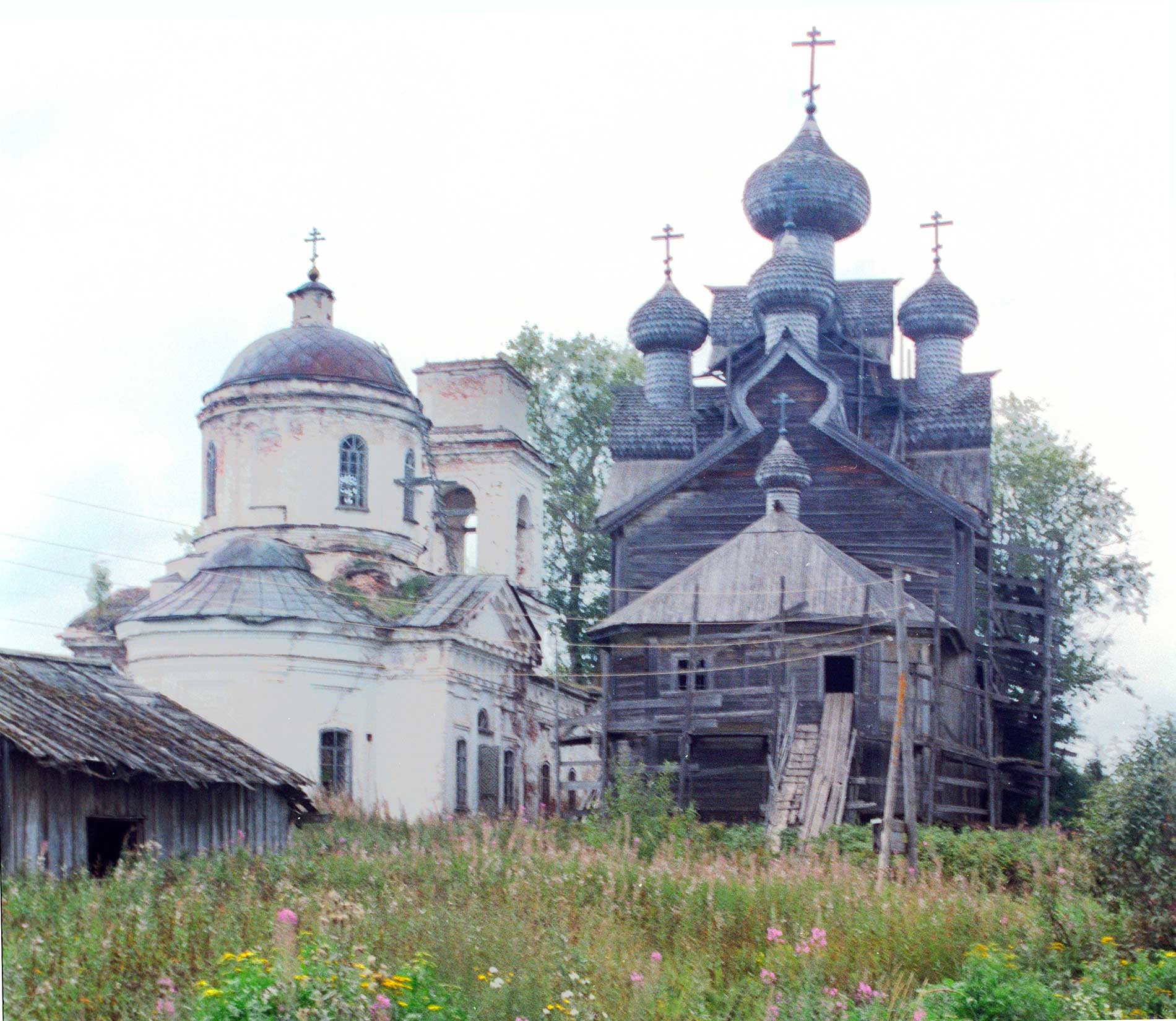
Church of Icon of the Sign (left) & Church of the Epiphany. East view. Aug. 28, 2006.
William BrumfieldLike its neighbor, the Znamensky Church was closed and ransacked during the Soviet period. Exposed to the elements over the decades and overgrown with weeds, the roof and walls have degraded with threatening cracks in the structure. My photographs of the interior project a sort of lyrical desolation, Although the solidly built structure will probably stand for the foreseeable future, its future is uncertain, particularly without a viable parish. The degradation continues with this lovely example of provincial Neoclassicism.
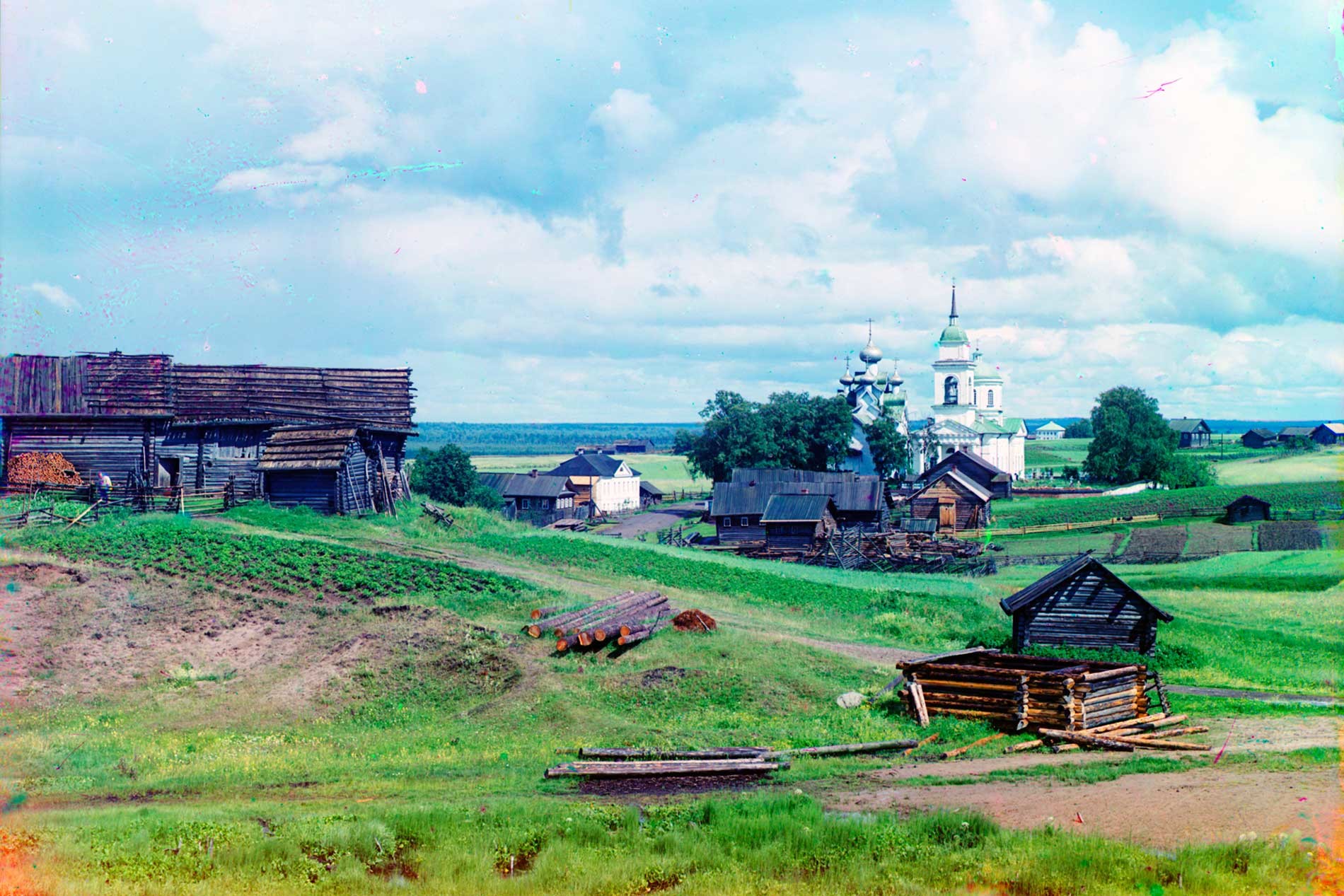
Paltoga village, with Church of the Epiphany (left)&Church of Icon of the Sign. West view. Summer 1909.
Sergei Prokudin-GorskyIn the early 20th century the Russian photographer Sergei Prokudin-Gorsky devised a complex process for color photography. Between 1903 and 1916 he traveled through the Russian Empire and took over 2,000 photographs with the process, which involved three exposures on a glass plate. In August 1918, he left Russia and ultimately resettled in France with a large part of his collection of glass negatives. After his death in Paris in 1944, his heirs sold the collection to the Library of Congress. In the early 21st century the Library digitized the Prokudin-Gorsky Collection and made it freely available to the global public. Many Russian websites now have versions of the collection. In 1986 the architectural historian and photographer William Brumfield organized the first exhibit of Prokudin-Gorsky photographs at the Library of Congress. Over a period of work in Russia beginning in 1970, Brumfield has photographed most of the sites visited by Prokudin-Gorsky. This series of articles will juxtapose Prokudin-Gorsky’s views of architectural monuments with photographs taken by Brumfield decades later.
If using any of Russia Beyond's content, partly or in full, always provide an active hyperlink to the original material.
Subscribe
to our newsletter!
Get the week's best stories straight to your inbox